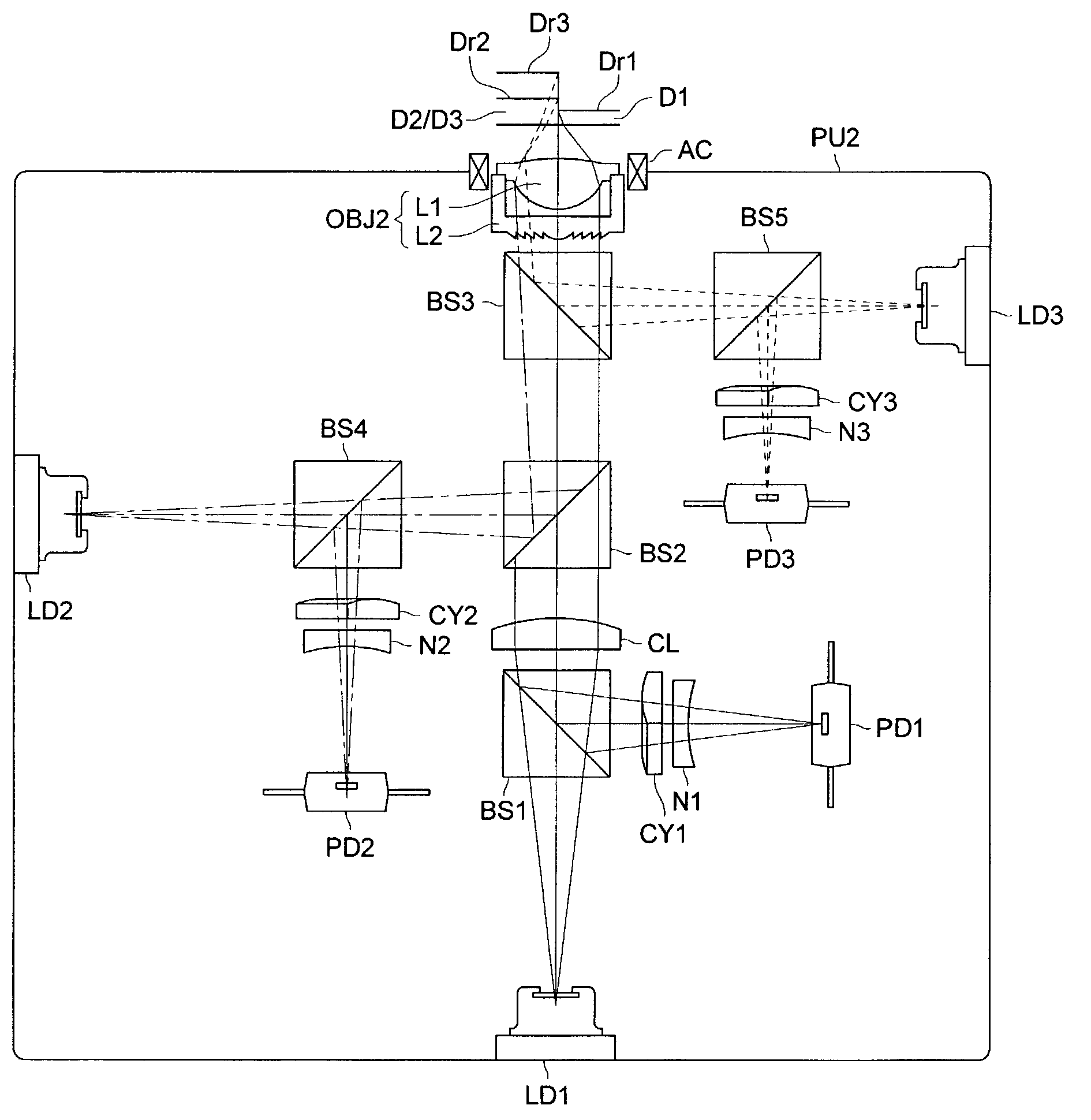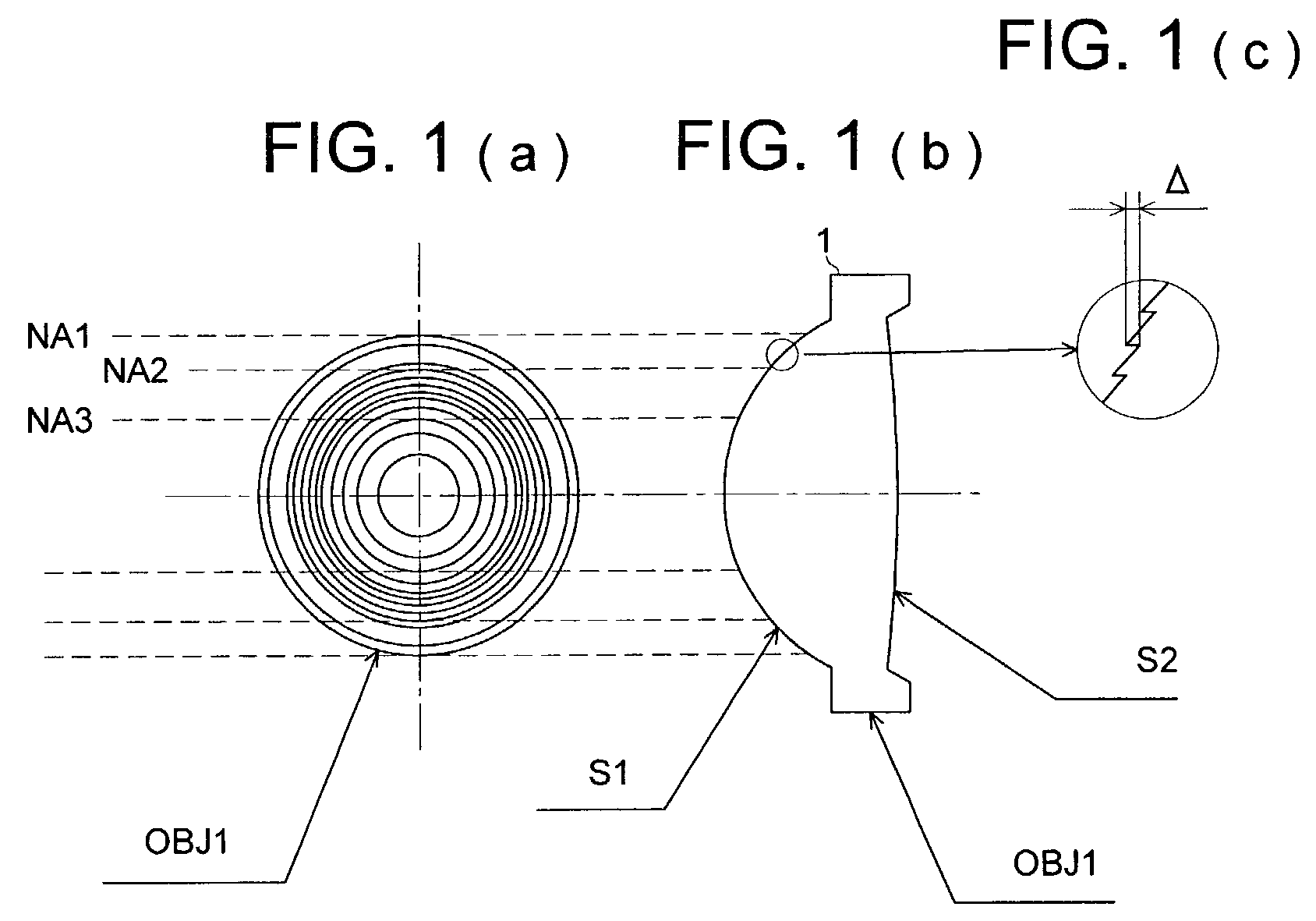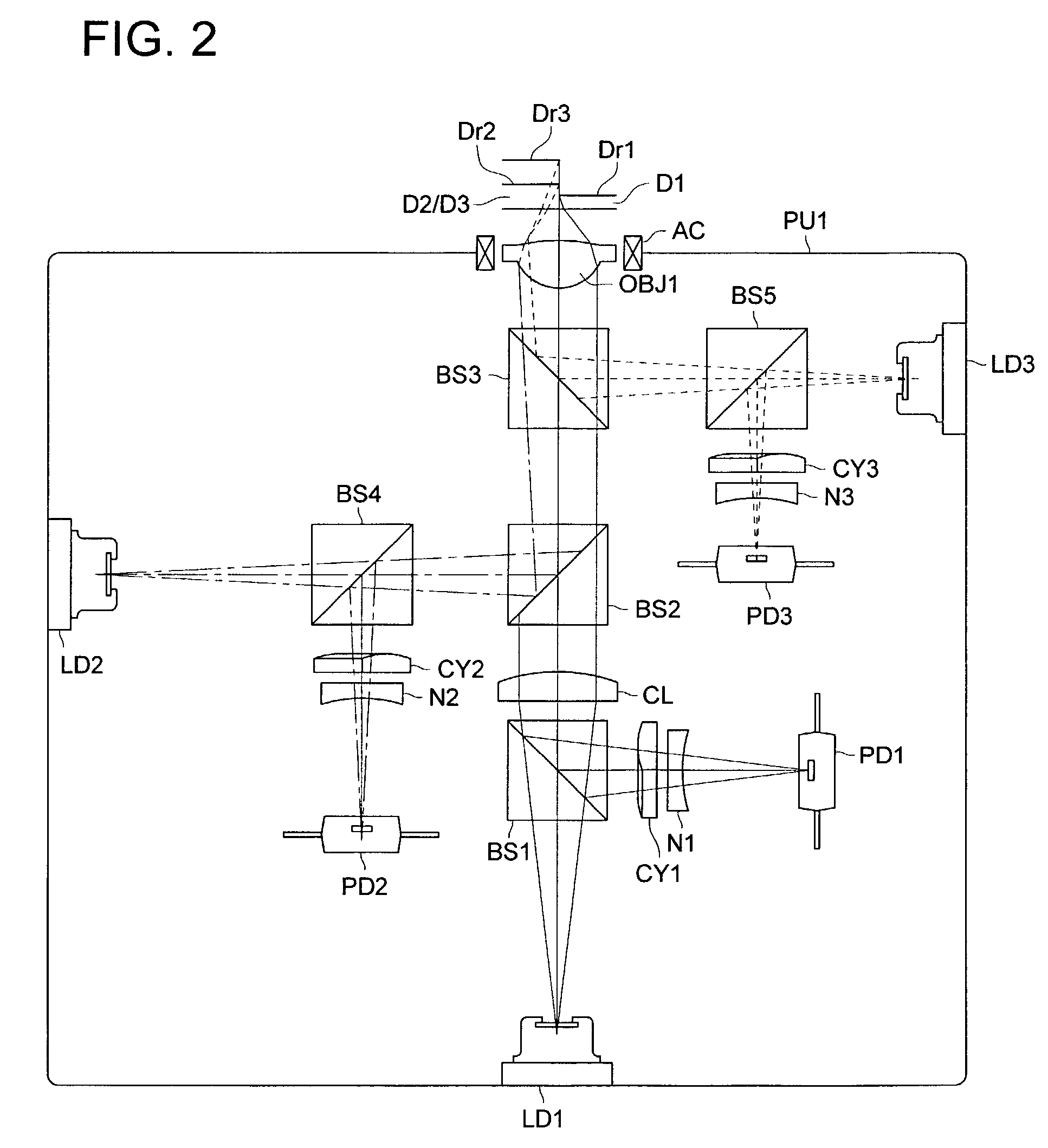Objective lens, optical element, optical pick-up apparatus and optical information recording and/or reproducing apparatus equipped therewith
a technology of optical information recording and/or reproducing apparatus, which is applied in the direction of lenses, optical beam sources, instruments, etc., can solve the problems of increasing the size of the optical pick-up system, increasing production costs, and difficulty in ensuring the sufficient working distance when the cd is recorded, and achieves fine conductivity and high diffraction efficiency.
- Summary
- Abstract
- Description
- Claims
- Application Information
AI Technical Summary
Benefits of technology
Problems solved by technology
Method used
Image
Examples
first embodiment
(First Embodiment)
[0350]FIG. 1 is a schematic diagram showing objective lens OBJ1 of the present embodiment, and FIG. 1(A) is a front view, FIG. 1(B) is a side view and FIG. 1(C) is a diagram wherein a side face is partially enlarged. This objective lens OBJ1 is an objective lens that is common to, for example, a high density optical disk such as a high density DVD using a short wavelength light source like a violet semiconductor laser, an optical disk meeting the DVD standard requirements such as DVD, DVD-ROM, DVD-RAM, DVD-R, DVD-RW, and DVD+RW which use a red semiconductor laser, and an optical disk meeting the CD standard requirements such as CD, CD-R, CD-RW, CD-Video and CD-ROM which use an infrared semiconductor laser, and it is applied to an optical pickup device for recording / reproducing compatibly, and has a function to converge a laser beam emitted from the light source on an information recording surface of the optical disk.
[0351]The objective lens OBJ1 is a single lens ha...
second embodiment
(Second Embodiment)
[0391]FIG. 3 is a schematic diagram showing objective lens OBJ2 of the present embodiment, and FIG. 3(A) is a front view, FIG. 3(B) is a side view and FIG. 3(C) is a diagram wherein a side face is partially enlarged. This objective lens OBJ1 is an objective lens that is common to, for example, a high density optical disk such as a high density DVD using a short wavelength light source like a violet semiconductor laser, an optical disk meeting the DVD standard requirements such as DVD, DVD-ROM, DVD-RAM, DVD-R, DVD-RW, and DVD+RW which use a red semiconductor laser, and an optical disk meeting the CD standard requirements such as CD, CD-R, CD-RW, CD-Video and CD-ROM which use an infrared semiconductor laser, and it is applied to an optical pickup device for recording / reproducing compatibly, and has a function to converge a laser beam emitted from the light source on an information recording surface of the optical disk.
[0392]The objective lens OBJ2 is a hybrid object...
example 1
[0411]Example 1 wherein lens data are shown in Table 1 is a plastic single lens that is appropriate as objective lens OBJ1 in the embodiment stated above, and a diffractive structure in a form of ring-shaped zones is formed on the first surface (S1). In the objective lens of the present example, the following is assumed as specifications for the first optical disk D1, the second optical disk D2 and the third optical disk D3.
[0412]NA1=0.85, λ1=405 nm, t1=0.1 mm, m1=0
[0413]NA2=0.65, λ2=650 nm, t2=0.6 mm, m2=−0.03
[0414]NA3=0.50, λ3=780 nm, t3=1.2 mm, m3=−0.14
[0415]Optimized wavelength λB and optimized order nB of the diffractive structure formed in the common area corresponding to the inside of NA3 and the first peripheral area corresponding to the inside of NA3–NA2 are respectively λB=415 nm and nB=6, and optimized wavelength λB and optimized order nB of the diffractive structure formed in the second peripheral area corresponding to the inside of NA2-NA1 are respectively λB=405 nm and...
PUM
| Property | Measurement | Unit |
|---|---|---|
| thickness t1 | aaaaa | aaaaa |
| thickness t2 | aaaaa | aaaaa |
| thickness t3 | aaaaa | aaaaa |
Abstract
Description
Claims
Application Information
 Login to View More
Login to View More - R&D
- Intellectual Property
- Life Sciences
- Materials
- Tech Scout
- Unparalleled Data Quality
- Higher Quality Content
- 60% Fewer Hallucinations
Browse by: Latest US Patents, China's latest patents, Technical Efficacy Thesaurus, Application Domain, Technology Topic, Popular Technical Reports.
© 2025 PatSnap. All rights reserved.Legal|Privacy policy|Modern Slavery Act Transparency Statement|Sitemap|About US| Contact US: help@patsnap.com



